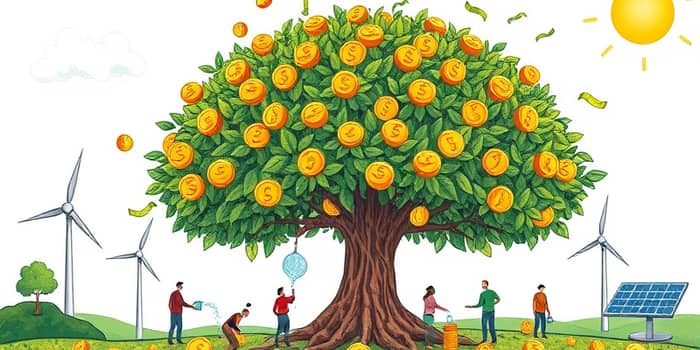
As capital markets evolve, more investors ask whether they can do good and do well. Sustainable investing has surged to the forefront, offering the promise of strong returns alongside positive societal outcomes. In this article, we explore why interest is high, how the market is growing, and what the future holds for sustainable investments now offer comparable or better returns than traditional strategies.
The appetite for sustainable investment is undeniable. Surveys show that 88% of investors worldwide express a genuine interest in placing capital with ESG-focused strategies. This demand is particularly pronounced among the youngest cohorts, who view their portfolios as instruments for change.
younger generations are driving market demand, with 99% of Gen Z and 97% of Millennials globally reporting interest. Even within the United States, 83% of respondents indicate keen engagement, and 85% of Millennials and Gen Z specify they are drawn to funds that align financial and ethical goals.
Institutional flows into sustainable vehicles have accelerated dramatically. ESG-focused investments are projected to reach $33.9 trillion by 2026, reflecting an explosion of capital committed to environmental and social objectives. As of 2022, U.S. sustainable investing assets stood at $8.4 trillion, highlighting the domestic scale of the trend.
By the end of 2024, assets under management in sustainable funds reached a record $3.56 trillion, and global inflows in Q4 2024 alone totaled $16 billion—nearly doubling the previous quarter’s $9.2 billion. This momentum underscores the confidence investors place in these strategies to shape corporate behavior and address pressing challenges.
Financial returns are at the heart of any investment decision. Over the past half-decade, sustainable funds have delivered performance that rivals or surpasses conventional counterparts. From December 2018 through late 2024, $100 invested in sustainable funds grew to $136, compared to $131 for traditional portfolios. This trend shows that ESG considerations need not compromise profitability. These results demonstrate long-term outperformance over traditional investment funds and underscore the resilience of ESG-aligned portfolios.
Moreover, these funds have demonstrated resilience during downturns. They exhibit lower downside risk during market volatility, cushioning investors through crises such as the 2008 financial crash and the early 2020 pandemic sell-off. Historical benchmarks like the JUST U.S. Large Cap Diversified Index returned 15.94% annually since inception, outperforming the 14.76% average annual return of the Russell 1000.
Why do investors flock to sustainable strategies? Aside from returns, a host of incentives drive allocations toward ESG funds. These motivations reflect a blend of economic, ethical, and strategic priorities.
Additionally, investors recognize that companies with strong governance, environmental stewardship, and social responsibility often possess robust management practices. This can translate into more stable revenues, lower capital costs, and durable business models capable of weathering regulatory and market shifts.
Beyond pure finance, sustainable investing channels capital toward enterprises that address major societal challenges. From renewable energy and carbon reduction to diversity, equity, and inclusion initiatives, ESG allocations actively capital flows support climate action and equity and other critical missions. Consumer surveys echo this sentiment, with 83% of buyers expecting firms to adopt and champion responsible practices.
This dynamic creates a virtuous cycle: as consumers demand accountability, corporations respond by improving transparency, reducing emissions, and investing in communities. Investors, in turn, reward these companies with increased market valuations, solidifying the link between purpose and profit.
Sustainable investing is not without its complexities. Achieving desired impact requires a long-term perspective, as meaningful change in environmental and social outcomes unfolds over years. Measuring impact demands sophisticated metrics that go beyond traditional financial analysis, and some vehicles may carry higher volatility depending on regional exposures.
Recent underperformance in the latter half of 2024—where sustainable funds yielded 0.4% versus 1.7% for traditional funds—reminds investors that short-term fluctuations can occur. However, this divergence was largely driven by specific market dynamics rather than fundamental flaws in ESG principles. Diligent due diligence and a focus on diversified sustainable solutions mitigate these temporary setbacks.
Sustainable investing represents a transformative shift in how capital markets allocate resources. With projections indicating over $33.9 trillion in ESG assets by 2026 and performance metrics underscoring competitive returns, the case for aligning profit with purpose has never been stronger. As younger investors assume greater influence, the momentum behind sustainability is poised to accelerate.
For investors seeking to generate robust financial returns while contributing to a healthier planet and more equitable society, sustainable strategies offer a compelling path forward. By embracing these principles today, stakeholders can help shape resilient businesses and thriving communities for generations to come.
References













